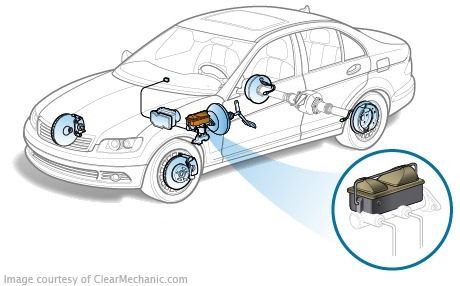
Composition of brake fluids
Instructions to the car of any manufacturer have always indicated which brake fluid is compatible with the machine. The composition of the brake fluid is of great importance. The chemical components of the liquid may have different effects on the braking system. The wrong selected brake fluid is capable of deforming the system and disrupting its operation, up to the failure of the brakes.
What is the composition of the brake fluid?
The qualitative brake fluid is a guarantee of the ideal operation of the braking system. The basic parameters that determine the quality are:
Boiling point. The brake fluid shall not be filled at relatively low temperatures, because the braking system produces a lot of thermal energy. If the liquid is easily boiling, the generated steam bubbles are compressed and interfere with the brake force. This means that the brakes can stop working.
Viscosity. In conditions of low temperatures, the properties of the brake fluid are also very important. It should be well-circulated by the system. The frozen liquid blocks the work, too viscous-slows down, and over-liquid-increases the possibility of leakage;
The main characteristics of the brake fluid are boiling point, viscosity and hygroscopic conditions
The piggoscopic. The lower the moisture is able to absorb the brake fluid, the better. For the excess moisture is the rapid adhesion of the liquid, the stiffening at low temperatures and another change in its properties. And the fluid with the changed properties no longer performs its functions and needs to be replaced.
In addition to these characteristics, the corrosive and liquid properties of the liquid-they provide a long life for piston, cuff, and cylinders. Also, the liquid should not deform the rubber details of the system.
When replacing liquids, account shall be taken of their compatibility, as components of brake fluids with different bases may react chemally.

Different composition of brake fluids
The brake fluid consists of a base and additional additives (anti-corrosive, lubricating, etc.).
Mineral brake fluid is a classic. It is from the brake fluids based on castor oil with the addition of butyl or ethyl alcohol in the modern history of brake fluids. In addition to castor oil, other mineral oils and petroleum products are used as the basis.
The advantages of mineral liquids are excellent lubricating properties, low hygroscopic properties. Their minus is too low a boiling point, and the liquid has been frozen at the temperature of -20. In addition, castor oil-based fluids have a negative effect on the media, brass and aluminium, and petroleum products-on the rubber cuffs of the hydraulic drive. To ensure that the viscosity of the liquid is independent of the temperature, special additives are added to the mineral base.
Today, mineral liquids are used on domestic cars and machines that were manufactured more than 20 years ago, and their rubber cuffs are not compatible with modern glycols.
The brake fluids are mineral, glyco-left and silicone. Different types of brake fluids cannot be mixed
Due to low boiling point, mineral liquids do not apply to cars with disc brakes. Other brake systems may be used in an inter-season when the liquid is frozen. Some manufacturers also allow the use of specially designed mineral liquids for specific brake systems on their vehicles.
Glycole brake fluids (DOT 3, DOT 4, DOT 5.1) are the most common. Fluids, based on which polyethylene glycol and hydroether polyester are based on modern international standards. The only major lack of glycolev fluid is high hygroscopic, which leads to relatively frequent replacement of the liquid.
Silicone brake fluids (DOT 5). The basis of these fluids is silicon, organic polymers. Silicon-based liquid does not absorb moisture, does not destroy rubber and metal parts, has a stable viscosity independent of temperature. But the lubricating properties of silicone liquids leave much to be desired. Silicone brake fluids are more likely to be used in the braking system of sports and racing cars.
Silicone brake fluid with silicone (DOT-5.1/ABS). These fluids are specifically designed for vehicles with an anti-lock system.
Can I mix?
Mixing or filling a new liquid without first cleaning the system is possible only in one case-when the liquid is glycolic, simply belong to different classes (DOT 3, DOT 4 and DOT 5.1). However, the manufacturers recommend mixing liquids of one class, and even better, with one brand.
Minerals and glycols are not combined if they are mixed-rubber cuffs of the hydraulic drive are deformed. Liquids in which silicone is present are categorically incompatible with any other. Chemical reactions in the case of mixing liquids with other aggresdees on the part of the system and completely change the properties of the brake fluid.







